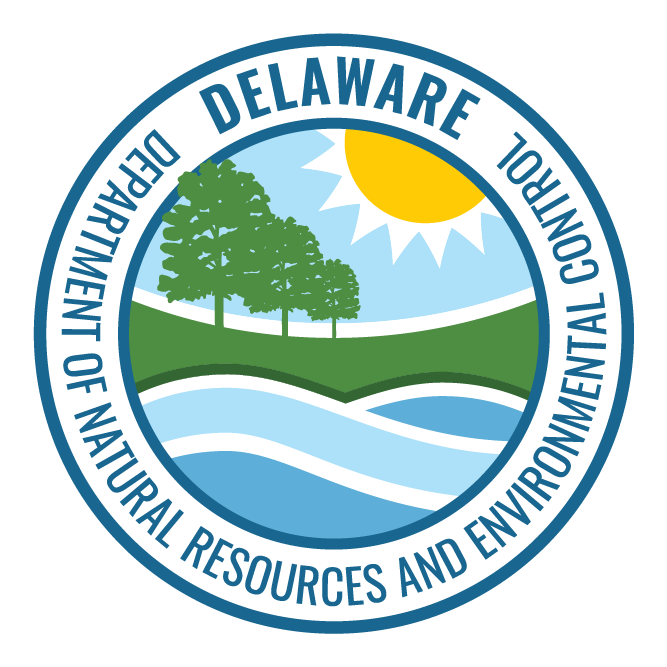Pages Tagged With: "assessment"
Plan de Restauración Avanzado para la Cuenca del Canal C&D
DNREC ha desarrollado un plan integral para abordar los contaminantes tóxicos en la cuenca del canal C&D.Advance Restoration Plan for the C&D Canal Watershed
DNREC has developed a comprehensive plan to address toxic contaminant impairments in the C&D Canal watershed.Total Maximum Daily Loads and Advance Restoration Plans
When monitoring reveals that waterways do not meet Delaware’s water quality standards for their intended uses, as defined in Delaware’s Surface Water Quality Standards, they are added to a list of impaired waterways (Delaware’s 303(d) List). For each impaired waterway, the Federal Clean Water Act (CWA) requires states to develop Total Maximum Daily Loads (TMDLs)Swimming Advisory Caution
The DNREC Recreational Water Program monitors bacterial water quality at established sampling sites throughout the state from May through September. If bacterial sampling results exceed state standards, DNREC issues swimming advisories for Atlantic Ocean beaches, as well as for Delaware Bay beaches south of and including Lewes Beach and for Lake Como in Smyrna.Source Water Assessment and Protection
The Source Water Assessment and Protection Program provides for the assessment and protection of sources of public drinking water from both surface water and groundwater sources in Delaware.Contact Us
Doug Rambo 302-739-9948
Delaware’s Draft 305(b) and 303(d) Waters Assessment Methodologies and Data Solicitation
The Department is asking for public comment on Draft Assessment and Listing Methodologies for the next Combined Watershed Assessment Report.Wetland Assessment Map
The Wetland Monitoring and Assessment program publishes wetland health assessments of the health of Delaware’s wetlands at a watershed level. The map below provides basic information about the health of the wetlands in Delaware watersheds for which assessments are complete. Watersheds are shown in colors reflecting the overall health of the wetlandsBlue-Green Algae in Delaware
Blue-green algae blooms occur each year on Delaware ponds, lakes and some tidal freshwater areas. Because they can have harmful effects on people and animals, the state has posted warning signs at water bodies which historically have had blooms.Contact Us
Brandywine Watershed Wetland Assessment
The Brandywine watershed is located within New Castle County, where it encompasses 72,969 acres of land. This is the northernmost watershed in Delaware and is part of the Piedmont region. Though most of the Brandywine watershed is developed, this area contains Category One wetlands, which are unique and ecologically significant freshwater areas.Delaware Wetland Restoration Strategies
Wetlands across the state of Delaware face many challenges. However, there are opportunities to combat specific issues and to restore and protect Delaware’s wetland resources. The DNREC Wetland Monitoring and Assessment Program is developing strategies, specific to Delaware’s different watersheds, to identify and pursue those opportunities. The wetland restoration strategies will helpChester-Choptank Watershed Wetland Assessment
The Chester-Choptank watershed is located partially in Kent County and partially in New Castle County, where it encompasses 113,944 acres of land. Unlike most of Delaware’s watersheds, the Chester-Choptank drains to the Chesapeake Bay. The Chesapeake Bay drainage basin in Delaware, including the Chester-Choptank watershed, provides an estimated $3.4 billion in ecosystem goods and services.PFAS Investigation Sites
This page contains a list of sites being investigated by DNREC for per- and polyfluoroalkyl substances (PFAS) in drinking water, groundwater or surface water in Delaware.Contact Us
Exposure Assessment Near New Castle Air National Guard Base
In 2019, the Centers for Disease Control and Prevention (CDC) and the Agency for Toxic Substances and Disease Registry (ATSDR) initiated an exposure assessment for perf- and polyfluoroalkyl substances (PFAS) in the community near the New Castle Air National Guard Base in New Castle County. [panelWetland Monitoring and Assessment
By understanding the health of our wetlands, we also can better understand how to restore them and protect them from actions that cause damage.Contact Us
Alison Rogerson Delaware Wetlands 302-739-9939
Delaware Wetlands
The DNREC Wetland Monitoring and Assessment Program, known as Delaware Wetlands, provides quality reports on the status, health and function of Delaware’s wetlands. It collaborates with other government agencies, businesses, non-profits and universities to further wetland research.Contact Us
Appoquinimink River Watershed Wetland Assessment
The Appoquinimink River watershed is located within New Castle County and contains the Towns of Odessa, Middletown and Townsend. It drains into the Delaware Bay, encompassing 58,591 acres of land. Wetland Assessment ReportsMispillion Wetland Assessment
The Mispillion and Cedar Creek watersheds are located in southeastern Kent County and northeastern Sussex County. In Delaware this watershed includes the cities and towns of Milford, Houston, Lincoln and Slaughter Beach. Wetland Assessment ReportsBroadkill Watershed Wetland Assessment
The Broadkill River watershed in Sussex County encompasses 68,500 acres within the Delaware Bay and Estuary Basin. Twenty percent of the watershed is covered in wetlands. Wetland Assessment ReportsInland Bays Watershed Wetland Assessment
Unique and rare wetland communities surrounding the Inland Bays include Atlantic White Cedar swamps, sea-level fens, and interdunal swales providing habitat for numerous rare plants and animals. Wetland Assessment ReportsMurderkill Watershed Wetland Assessment
Located in Kent County, the Murderkill watershed covers 28,000 hectares (69,000 acres) within the Delaware Bay and Estuary Basin. This watershed contains many key natural heritage and wildlife habitats such as coastal plain streams and ponds, impoundments, wetlands and beach dunes. Rare wetland habitats including coastal plain ponds and bald cypress riverine patches are locatedNanticoke Watershed Wetland Assessment
Located in the Coastal Plain physiographic region, the Nanticoke River watershed historically was very rich in wetland resources which covered an estimated 46 percent of the land area. Wetland Assessment ReportsSt. Jones Watershed Wetland Assessment
Located in Kent County, the St. Jones River watershed covers 57,643 acres of the Delaware Bay Basin. The St. Jones River is dammed at Silver Lake in Dover and then winds 10 miles through residential and commercially developed areas, the Delaware National Estuarine Research Reserve, and the Ted Harvey Wildlife Area, before emptying into DelawareWetland Health Assessments
The Wetland Monitoring and Assessment program is tasked with the job of assessing the health of Delaware’s wetlands.Contact Us
Alison Rogerson Watershed Assessment 302-739-9939
Christina Watershed Wetland Assessment
The Christina Watershed is located in New Castle County, extending north and west into Maryland and Pennsylvania. In Delaware this watershed includes the cities and towns of Wilmington, Elsmere, Newark, and Christiana. Wetland Assessment ReportsSmyrna Watershed Wetland Assessment
The Smyrna River watershed encompasses 71 square miles and is composed of three sub-watersheds: Smyrna River, Duck Creek, and Cedar Swamp-Delaware Bay. It is located partially in Kent County and partially in New Castle County. The watershed is within the Delaware Bay and Estuary Basin, so all of its waters drain into the Delaware Bay.Leipsic Watershed Wetland Assessment
The Leipsic River watershed is composed of two sub-watersheds, Leipsic River and Little Creek, and encompasses 128 square miles. It is located in Kent County within the Delaware Bay and Estuary Basin, and all of its waters drain into the Delaware Bay. Land cover in this watershed is dominated by wetlands and agriculture.Red Lion Watershed Wetland Assessment
The Red Lion watershed is located within New Castle County, where it encompasses 46,283 acres (72 square miles) of land within the Delaware Bay and Estuary Basin. It is composed of the C&D Canal East, Dragon Creek, Red Lion Creek, Army Creek, and Broad Dike Canal. Approximately 16% of the land area of the watershedWatershed Plans and Strategies
Numerous documents describing plans or strategies for water quality and watershed improvements have been developed over the years. Some of these efforts originated through the Tributary Action Team process while others came through other initiatives. All of the documents below can be considered watershed management plans for the Water Quality Improvement Projects grant programPollution Control Strategies and Tributary Action Teams
A 1997 federal court case required Delaware to set pollution limits for its waterways. These limits are called Total Maximum Daily Loads or TMDLs, a term you will hear a lot in water pollution discussions. In order to meet these new pollution limits, we are identifying ways to reduce water pollution. Usually, citizens don’t getIntegrated Report: 305(b) Report and 303(d) List
Section 305(b) of the Federal Clean Water Act requires that states and other entities prepare and submit Watershed Assessment Reports to the US EPA on April 1 of every even-numbered year.Contact Us
Watershed Assessment and Managment Section 302-739-9939
You Can Help Protect Delaware’s Waterways
There are always things that you can do in your everyday life, no matter where you live, to help protect the waterways that serve as our drinking water sources, habitat for wildlife, and places of recreation. Maintain a Healthy Lawn and Garden A healthy lawn and garden makes aWatershed Assessment and Management
The Watershed Assessment and Management Section oversees the health of the state’s surface water resources and takes actions to protect and improve water quality for aquatic life and human use.Contact Us
Michael Bott 302-739-9939
Whole Basin Management
Beginning in the 1990s, the Department of Natural Resources and Environmental Control (DNREC) took a different approach to assessing, managing, and protecting Delaware’s natural resources. This approach, known as Whole Basin Management, encouraged the various programs throughout DNREC to work in an integrated manner to assess different geographic areas of the state defined on theProtecting Our Waterways
There are many things each of us can do to help reduce nutrient and sediment pollution entering Delaware’s waterways. Our efforts will not only help protect the environment, but in many cases, when you lend a hand to protect our waterways, you will also find that you’re adding beauty to your yard,Water Quality Monitoring
Delaware’s bays, ponds, streams, and rivers are monitored on a regular basis to assess the quality of Delaware’s surface waters. Much of the monitoring is done by DNREC, though other groups, including federal agencies, academic institutions, and citizen volunteer monitoring programs, also contribute to these efforts.Inland Bays Pollution Control Strategy
The Inland Bays Pollution Control Strategy (PCS) and accompanying regulations were finalized in Nov. 2008. This strategy is designed to improve the water quality of the bays (Rehoboth Bay, Indian River Bay, and Little Assawoman Bay), as well as the rivers, streams, and ponds that drain to the bays. ADVISORY: ASurface Water Quality Standards
The National Clean Water Act of 1972 set in place a program that is intended to restore the chemical, physical, and biological integrity of the nation’s waters. To reach these goals, a series of steps were mandated by Congress for the Environmental Protection Agency and the individual States to take. The first step was forShellfish Plant Inspections
Plant inspections of all shellfish shippers and processors are conducted routinely by certified Shellfish Program staff to ensure compliance with national food safety regulations and those specific to the shellfish industry.Contact Us
Promoting Shellfish Safety
To ensure the safety of Delaware’s shellfish growing areas, it is important that residents and visitors help maintain good water quality and limit pollution while recreating in or near shellfish growing areas.Contact Us
Andrew Bell Environmental Scientist 302-739-9939




